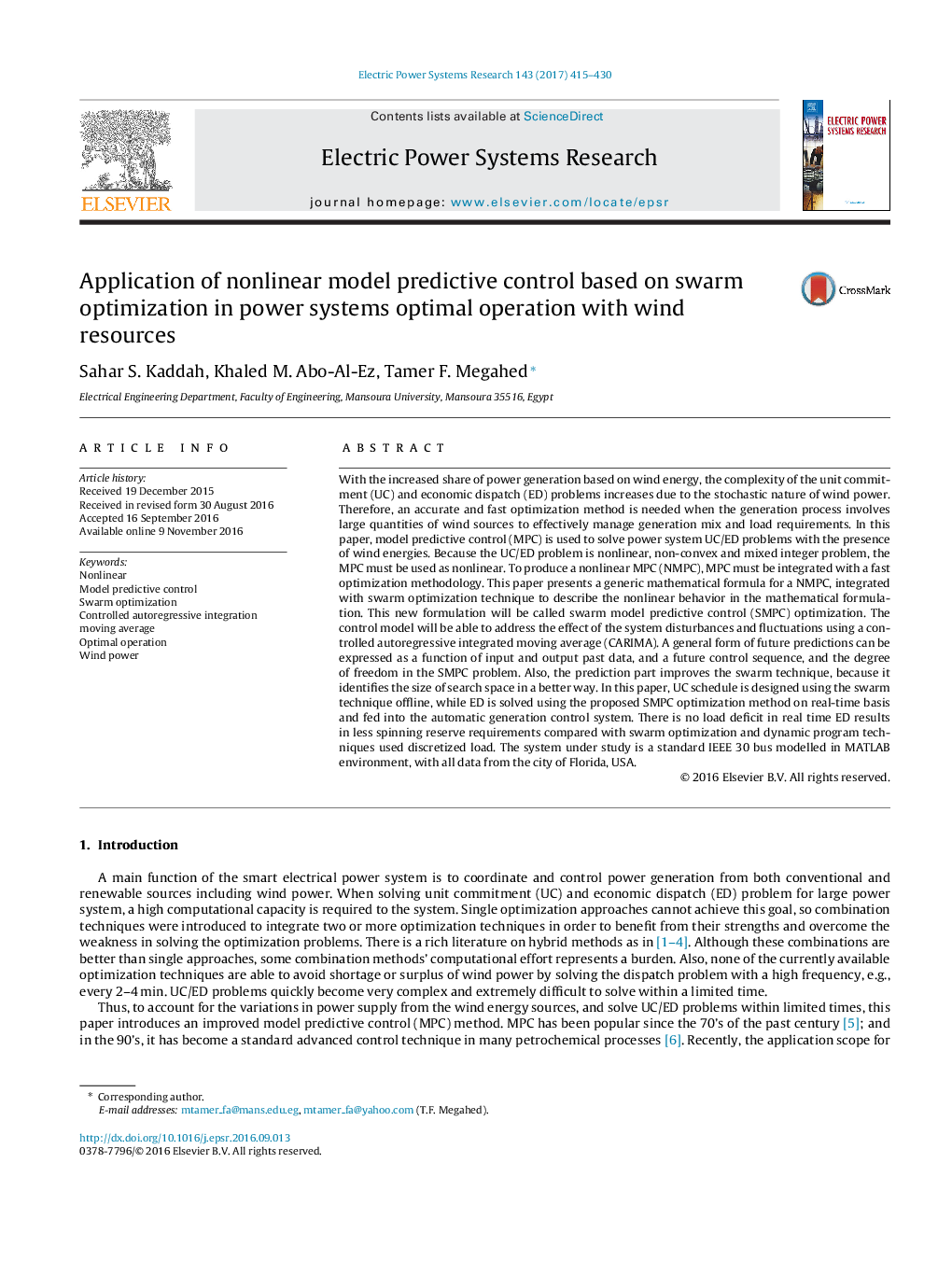| کد مقاله | کد نشریه | سال انتشار | مقاله انگلیسی | نسخه تمام متن |
|---|---|---|---|---|
| 5001247 | 1460870 | 2017 | 16 صفحه PDF | دانلود رایگان |
- Building a generic mathematical formula for a nonlinear model predictive control.
- Swarm optimization with model predictive control is used to describe the UC/ED nonlinearity.
- Controlled autoregressive integration moving average is used to predict wind power and disturbance.
- Swarm model predictive control is used to solve ED on real-time basis.
With the increased share of power generation based on wind energy, the complexity of the unit commitment (UC) and economic dispatch (ED) problems increases due to the stochastic nature of wind power. Therefore, an accurate and fast optimization method is needed when the generation process involves large quantities of wind sources to effectively manage generation mix and load requirements. In this paper, model predictive control (MPC) is used to solve power system UC/ED problems with the presence of wind energies. Because the UC/ED problem is nonlinear, non-convex and mixed integer problem, the MPC must be used as nonlinear. To produce a nonlinear MPC (NMPC), MPC must be integrated with a fast optimization methodology. This paper presents a generic mathematical formula for a NMPC, integrated with swarm optimization technique to describe the nonlinear behavior in the mathematical formulation. This new formulation will be called swarm model predictive control (SMPC) optimization. The control model will be able to address the effect of the system disturbances and fluctuations using a controlled autoregressive integrated moving average (CARIMA). A general form of future predictions can be expressed as a function of input and output past data, and a future control sequence, and the degree of freedom in the SMPC problem. Also, the prediction part improves the swarm technique, because it identifies the size of search space in a better way. In this paper, UC schedule is designed using the swarm technique offline, while ED is solved using the proposed SMPC optimization method on real-time basis and fed into the automatic generation control system. There is no load deficit in real time ED results in less spinning reserve requirements compared with swarm optimization and dynamic program techniques used discretized load. The system under study is a standard IEEE 30 bus modelled in MATLAB environment, with all data from the city of Florida, USA.
Journal: Electric Power Systems Research - Volume 143, February 2017, Pages 415-430
